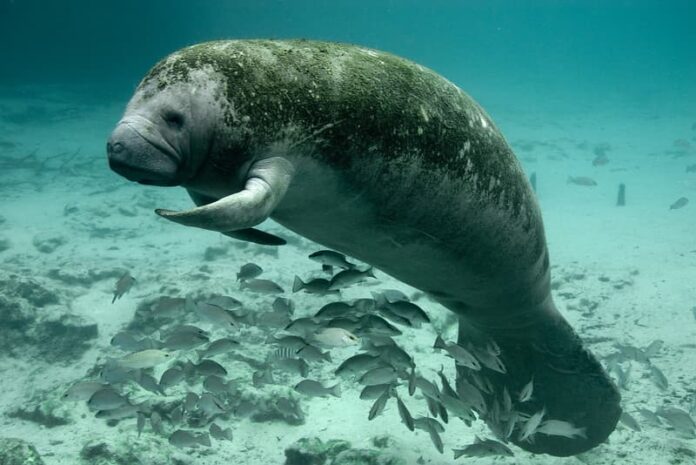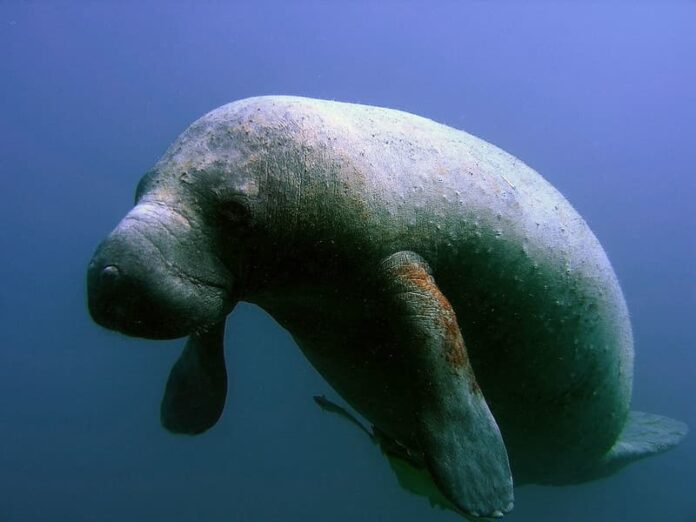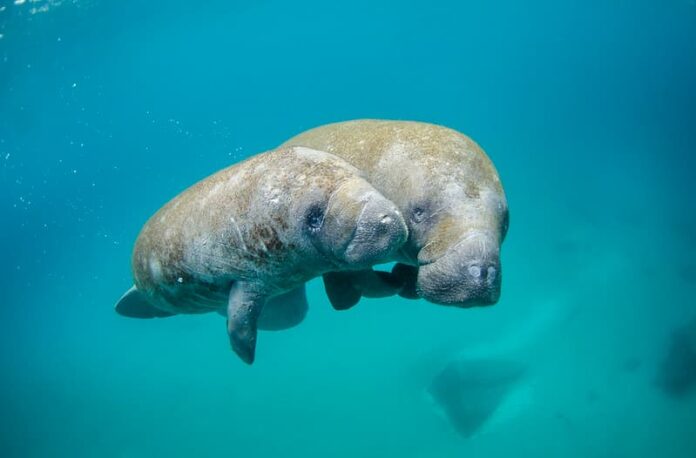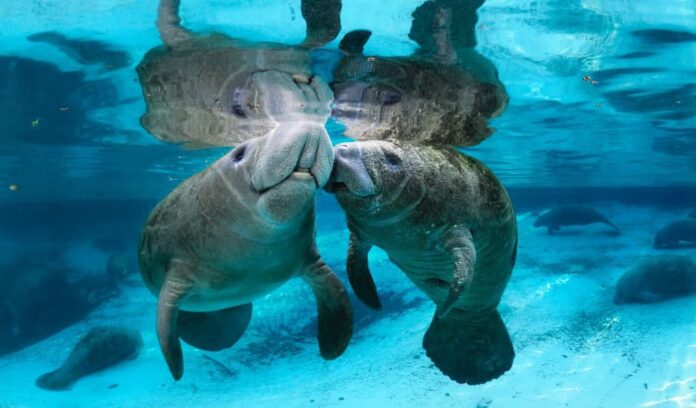Manatee or sea cow is a fully aquatic marine mammal with a fascinating appearance and information. Many people don’t really talk about them, and this is why I am here today to bring this topic up. If you are a fan of mermaids, you probably have heard of manatees before. And you will find out why when you read further. One quick fact though, manatees are thought to have evolved from four-legged mammals whose closest relatives are actually elephants. You will discover several other cool things about these sea cows below, so check them out.
1Appearance

So Christopher Columbus and other early explorers were among the people who claimed to see mermaids swimming in the ocean. Could be the trick of the light or could be being stranded in the sea for too long, but those were manatees. Manatees have large gray bodies with 2 forelimbs called flippers and flat paddle-shaped tails, matching the description of mermaids much? Manatees swim by flatting their tails up and down, and their flippers (with nails) help them steer while swimming. They have whiskers on their snouts, and they can tightly close their nostrils on their snout when underwater to keep the water out.
If you look closely, you can see that a manatee has very small eyes without eyelashes or eyelids. Instead, they have nictitating membranes that protect their eyes underwater while still allowing the animals to see. Manatees do not possess the neck vertebrae that most mammals have which means that cannot turn their heads. So if they look want to look around, they will have to turn their entire bodies to see the surroundings. There are also fine hairs over the body that aid with a sense of touch to help them understand their surroundings. You will also see some algae and barnacles on the backs and tails of manatees because they are very slow-moving animals.
2Behavior

Manatees are semi-social animals, so they sometimes gather together while other times they travel solitarily to search for food or mates. When traveling, they do need to do that together but they do socialize when they see other manatees. While being so large and heavy, manatees are the cuddly bears of the oceans that are gentle, non-aggressive, and slow-moving. These mammals spend their day eating (which takes up to 8 hours), resting (from 2 to 12 hours), and traveling. They are calm and friendly, and they are also smart animals that can learn basic tasks during training. Manatees are extremely sensitive to touch, and they can also differentiate colors as well.
As aquatic animals, manatees never leave the water but they will come up for air every 5 minutes. Things are different when they are resting because a manatee can hold its breath for up to 20 minutes. And when it exerts great amounts of energy, a manatee will surface as often as every 30 seconds. When they take a breath, 90% of the air in their lungs is replaced while it works only 10% in humans. Although they are slow, manatees can swim up to 20 miles per hour in short bursts but they don’t often do that. Moreover, they can move vertically, roll, swim upside down, and even do somersaults in the eater.
3Feeding & Habitats

Manatees are herbivores, and their diet consists of over 60 aquatic species of floating, shoreline, and underwater plants. The most common food that they primarily feed on are algae, mangrove leaves, and seagrasses that they can find. These aquatic mammals eat more than 10 percent of their weight of food every day, spending almost half the day. The interesting thing is that they have grinding teeth (all molars) instead of biting teeth that are constantly being replaced. A manatee can move each side of its lip pads independently which allows it to grab aquatic plants to feed.
These water dwellers are typically found in shallow canals, coastal areas, estuaries, rivers, and saltwater bays where they feed. You probably wonder how they can live in between different types of habitats like this. Manatees have an internal regulation system that works with the kidney to make sure that salt concentrations never get too high. This is to maintain the correct balance in their bodies when they live between fresh and salty water.
4Predators & Threats

Manatees have no natural predators in the wild, the only predators that harm and hunt them are humans. Hunters seek their bones, hides, and oils, causing their numbers to decline and their population to be at risk. All 3 species of manatee including the Amazonian manatee, West African manatee, and West Indian manatee are considered Vulnerable. There are some major threats to their population such as boat collisions, habitat destruction, hunting, and toxic red tides. Because they require a lot of food each day, competition for their food source with urchins is another reason. More than that, a certain percentage of manatee mortality is attributed to natural causes of death. Those include cold stress, gastrointestinal disease, pneumonia, and other diseases.
Related Post: Bonnethead The Omnivorous Sharks




